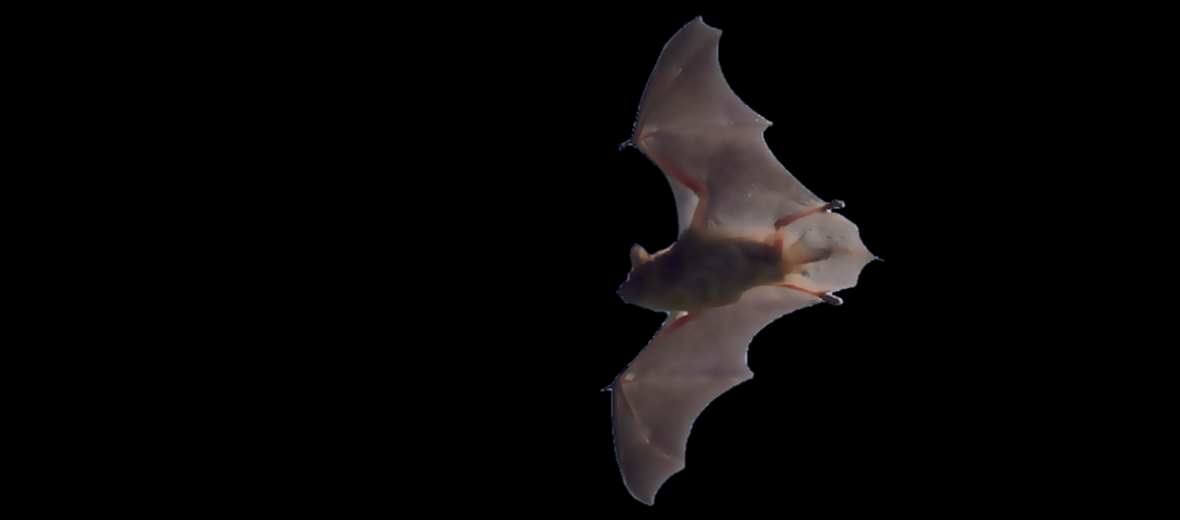
The little brown bat can be found in the U.S. and Canada, from the Pacific to the Atlantic coasts. There have also been documented instances in the forested areas of Mexico, at higher elevations. They typically live in forests, along rivers & lakes, but they also hide out in buildings and houses. There they will gather into large nursery colonies, sometimes 1,000+ strong! During winter these critters hibernate in caves, mines, houses, and buildings. The little brown bat is listed as endangered by the IUCN.
First the Stats…
Scientific name: Myotis lucifugus
Weight: Up to .5 ounce
Length: Up to 4 inches
Wingspan: Up to 10.6 inches
Lifespan: Up to 30 years
Now on to the Facts!
1.) During hibernation, on warmer winter nights, these little bats will awake from hibernation and fly around outside their nesting locations. But they do not feed.
2.) Their primary diet consists of flies, gnats, wasps, moths, beetles and mosquitoes. This makes them an insectivore.
3.) Little brown bats, like most other bats, are crepuscular (active at dawn and dusk) and nocturnal (active at night).
4.) Bats use echolocation to locate their prey. They send out high pitched sounds that bounce off their target and back to the bat, telling them what is in front of them. They can actually see just fine, but prefer to rely on echolocation to pinpoint flying insects.
5.) When a bat locks in on its prey, it grabs it with its wings and tucks it into a pouch that is formed when it brings its wing and tail membranes together. Then the insect is feasted upon with sharp teeth.
But wait, there’s more on the little brown bat!
6.) These bats are also known to eat insects right off the fur of other types of animals, like cows and horses.
7.) The little brown bat sleeps an average of 20 hours a day!
Did you know…?
These bats are subject to white-nose syndrome. This is a fungus (known as Pseudogymnoascus destructans – Pd) that affects hibernating bats and which has spread from the northeastern to the central United States and Canada with incredible efficiency. Since the winter of 2007 – 2008, millions of bats in at least 33 states and 7 Canadian provinces have died from this devastating disease. As it grows, Pd causes changes in bats that makes them become more active than usual and burn up fat they need to survive the winter.
8.) When flying they let out up to 20 calls per second in order to find prey and locate objects.
9.) An average brown bat will eat up to 1,000 insects in a single night!
10.) If the bats don’t consume enough food in a night, they are forced to sleep more to conserve energy. This can lead to mortality (death).
But wait, there’s still more on the little brown bat!
11.) Little brown bats are polygynandrous (both males and females have multiple mating partners during a breeding season). Males mate with several females while both mates are awake and alert (active phase). Active males will also mate with torpid (physically inactive) bats of both sexes (passive phase).
12.) Mating season is in the fall. However, fertilization doesn’t occur until spring. This is known as obligate diapause and also called delayed implantation. Females birth just 1 pup each season.
Now a Short Little Brown Bat Video!
Also, check out the Critter Science YouTube channel. Videos added frequently!
Want to suggest a critter for me to write about? Let me know here.



